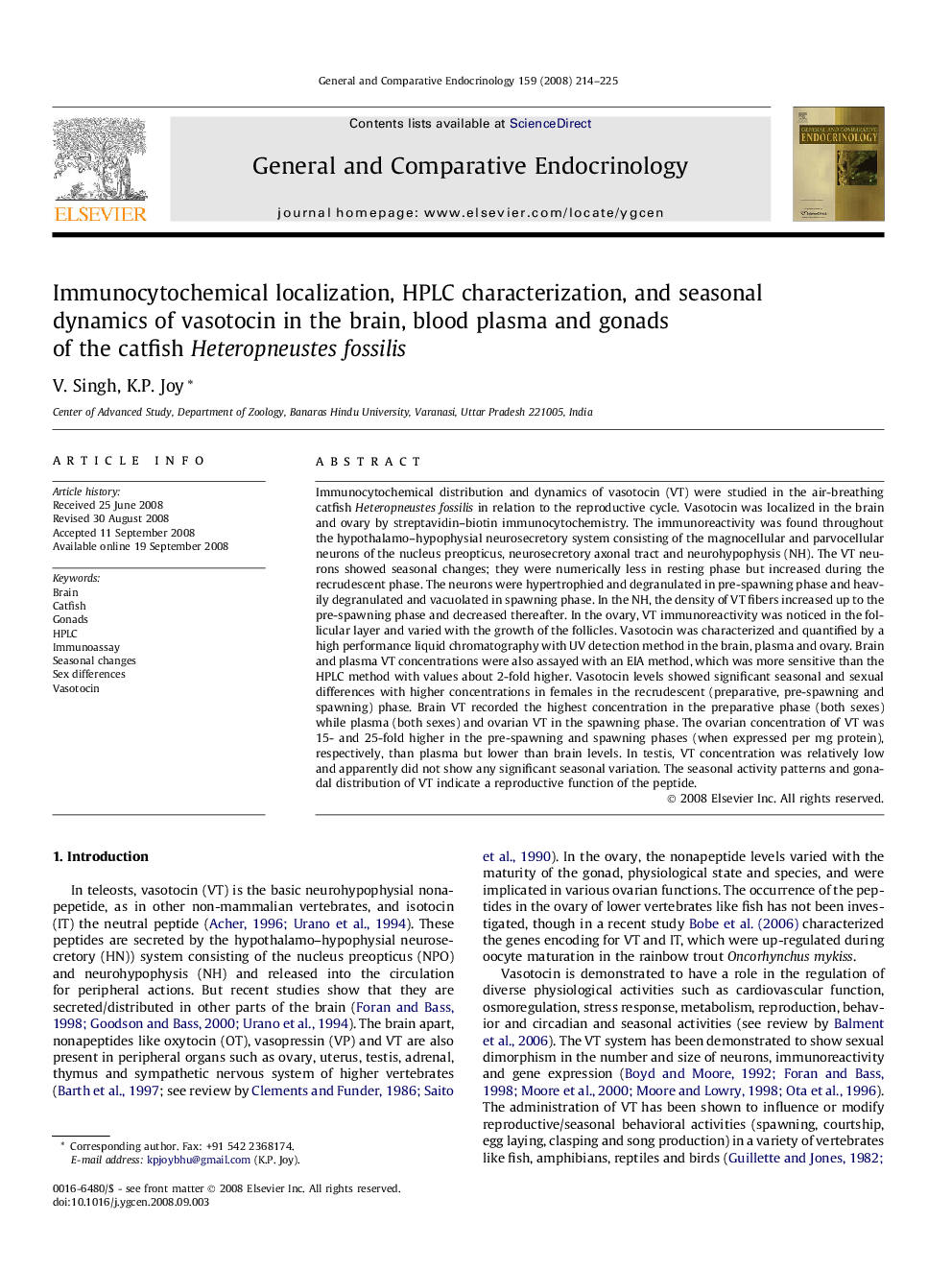| Article ID | Journal | Published Year | Pages | File Type |
|---|---|---|---|---|
| 2801847 | General and Comparative Endocrinology | 2008 | 12 Pages |
Immunocytochemical distribution and dynamics of vasotocin (VT) were studied in the air-breathing catfish Heteropneustes fossilis in relation to the reproductive cycle. Vasotocin was localized in the brain and ovary by streptavidin–biotin immunocytochemistry. The immunoreactivity was found throughout the hypothalamo–hypophysial neurosecretory system consisting of the magnocellular and parvocellular neurons of the nucleus preopticus, neurosecretory axonal tract and neurohypophysis (NH). The VT neurons showed seasonal changes; they were numerically less in resting phase but increased during the recrudescent phase. The neurons were hypertrophied and degranulated in pre-spawning phase and heavily degranulated and vacuolated in spawning phase. In the NH, the density of VT fibers increased up to the pre-spawning phase and decreased thereafter. In the ovary, VT immunoreactivity was noticed in the follicular layer and varied with the growth of the follicles. Vasotocin was characterized and quantified by a high performance liquid chromatography with UV detection method in the brain, plasma and ovary. Brain and plasma VT concentrations were also assayed with an EIA method, which was more sensitive than the HPLC method with values about 2-fold higher. Vasotocin levels showed significant seasonal and sexual differences with higher concentrations in females in the recrudescent (preparative, pre-spawning and spawning) phase. Brain VT recorded the highest concentration in the preparative phase (both sexes) while plasma (both sexes) and ovarian VT in the spawning phase. The ovarian concentration of VT was 15- and 25-fold higher in the pre-spawning and spawning phases (when expressed per mg protein), respectively, than plasma but lower than brain levels. In testis, VT concentration was relatively low and apparently did not show any significant seasonal variation. The seasonal activity patterns and gonadal distribution of VT indicate a reproductive function of the peptide.
